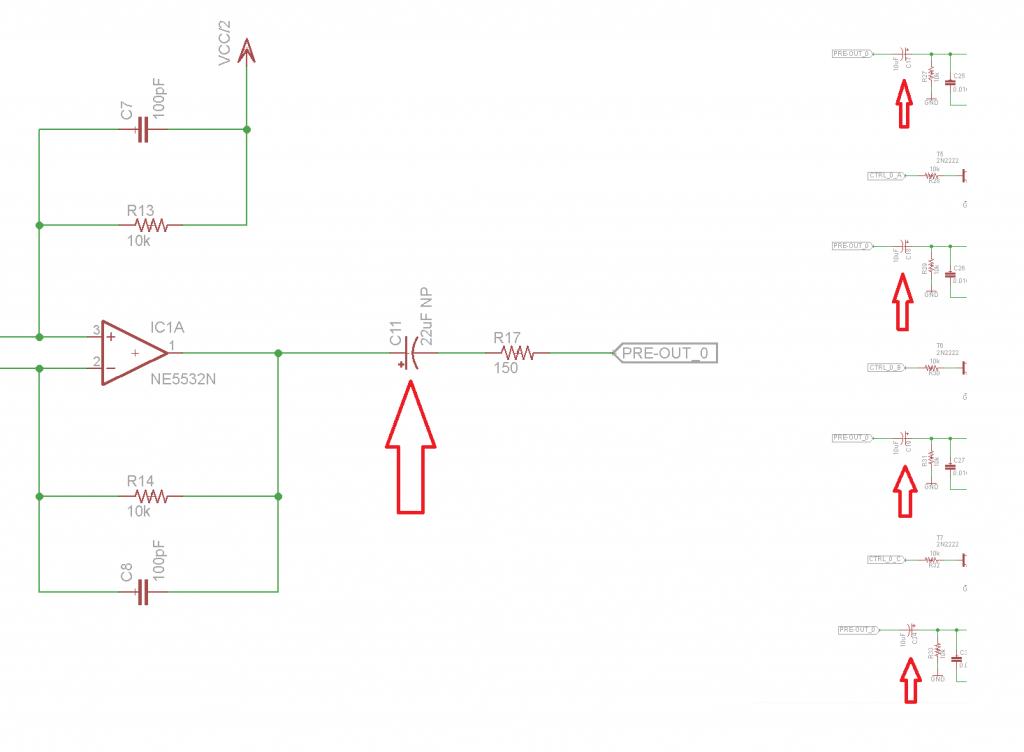Op-amps driving I'm not sure what they are called capacitors
Hello,
I hear a lot that capacitive loads are bad for op-amp outputs. But can an op-amp drive multiple capacitively I'm not sure what they are called lines? Take a look at the attached schematic image. Will this cause problems?
Thanks,
Marcus
P.S. The capacitor on the left is 22uF, and the 4 on the right are 10uF.

I hear a lot that capacitive loads are bad for op-amp outputs. But can an op-amp drive multiple capacitively I'm not sure what they are called lines? Take a look at the attached schematic image. Will this cause problems?
Thanks,
Marcus
P.S. The capacitor on the left is 22uF, and the 4 on the right are 10uF.



Comments
In this case they are being used as coupling capacitors. The purpose is to block the DC bias voltage and pass the desired AC signal.
Do some google searching on "amplifier coupling capacitors".
C.W.
1. In converstion of AC to DC power supplies, capacitors are used as a filter to reduce ripple. The goal is to eliminate a 50/60 cycle hum.
2. In oscillators, capactiors are often used with coils to tune to a particular frequency
3. Between amplifier stages, the capacitors can be used to block the DC portion of signal while letting the AC portion pass (with some limits on performance)
4. Also between amplifier stages, capacitors can be used to create a wide variety of passive filters.
5. Capacitors can be used in digital power distriubtion to block transients, another form of filtering.
You may be a bit confused about the differences between 3 and 4, but in most amplifier stages, the coupling capacitor is somewhat equavelent to a high pass filter where the blocked frequency is so low that it is not important.
The above only is mentioning passive filtering. Also, one can use capacitors in the op amp feedback to create active filters.
Try the below link for op amp info as applied to audio.
http://sound.westhost.com/
Thank you for the resources. What I gather is that these capacitors are only for DC blocking, and low frequency attenuation. But with the capacitor values I am using, the frequency cutoff will be below what I would require, so as not to cause a problem.
Thanks,
Marcus
Try that web side I mentioned. There is a lot to learn and a lot of helpful info there. Texas Instruments wrote a big book that is free on the internet on proper use of op amps.
BTW, It is NOT uncommon for the power feeds to have decoupling capacitors. And the amplifier stages can either have or omit depending on design goals.
The problem is more acute with micro-power op-amps that have relatively high output impedance. It should be less of a problem with an op-amp like your NE5532, which has high drive capability.
A direct coupled high gain amplifier will usually need overall feedback at DC, to prevent DC offset errors from accumulating and saturating at the output.